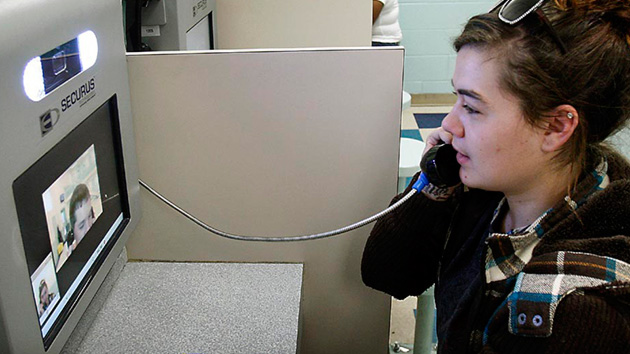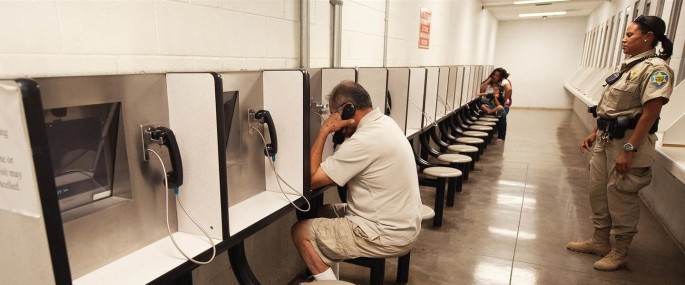Blog
Letter to the Congressional Oversight Committee

March 16, 2015
Rep. Jason Chaffetz
Chair of the House Oversight & Gov’t Reform
2157 Rayburn HOB
Washington, DC 20515
Rep. Elijah Cummings
Ranking Member of theHouse Oversight & Gov’t Reform
2157 Rayburn HOB
Washington, DC 20515
Dear Chairman Chaffetz and Ranking Member Cummings:
As racial justice and civil rights organizations, we write to express our support of the recent Federal Communications Commission decision to enact strong and enforceable Net Neutrality rules.
Our organizations are among the more than 100 racial justice and civil rights groups that have called on the FCC to pass strong Net Neutrality rules using its Title II authority. It is critical that the FCC have the legal authority to protect the online digital rights of communities that historically have been marginalized in our society. With such protections, our communities have been able to better participate in our democracy, tell our own stories, strive towards educational excellence and pursue economic success.
We are deeply troubled by Congressional efforts to overturn the Net Neutrality order and to strip the Commission of its legal authority to enforce its Net Neutrality protections under Title II of the Communications Act. This includes efforts to prevent the Commission from enforcing Net Neutrality by defunding the agency.
The Net Neutrality debate has centered on whether the Commission has the authority to enforce Net Neutrality rules that prevent Internet service providers (ISPs) from blocking or discriminating against online content. A federal court ruled last year that the Commission could not ban such online discrimination without reclassifying ISPs as common carriers under Title II. Therefore, the FCC cannot protect Internet users from ISP practices such as blocking, throttling and other types of discriminatory conduct that could arise as the marketplace and technology evolves, without asserting its authority under Title II.
This is why more than four million people have called on the FCC to use its Title II authority to adopt strong and enforceable Net Neutrality rules over the past year.
Accordingly, we respectfully request that you join the millions of digital equality champions and support the FCC’s historic decision, and reject any efforts to overturn or weaken the decision. You will be in good company, on the right side of public opinion and history.
Sincerely,
Alliance for a Just Society
Black Alliance for Just Immigration Black Lives Matter
Center for Community Change Center for Media Justice
Center for Popular Democracy
Center for Rural Strategies
Center for Social Inclusion ColorOfChange.org
Community Justice Network for Youth Demos
Dream Defenders
18 Million Rising
Ella Baker Center
Forward Together
Free Press
Hispanic Association of Colleges and Universities Latino Rebels
Media Action Grassroots Network
Mexican American Opportunity Foundation
Million Hoodies Movement for Justice
Movement Strategy Center
National Domestic Workers Alliance (NDWA) National Association of Hispanic Journalists
National Association of Latino Independent Producers National Economic & Social Rights Initiative
National Guestworker Alliance
National Hispanic Media Coalition
National Institute for Latino Policy
National Latina Institute for Reproductive Health National LGBTQ Task Force Action Fund
National People’s Action
News Taco
Nuestra Palabra: Latino Writers Having Their Say
Our Walmart
Philanthropic Initiative for Racial Equity
Presente.org
Radio Bilingüe
Race Forward
Right to the City Alliance
Roosevelt Institute Campus Network
The Librotraficante Movement
The Praxis Project
United Church of Christ, OC Inc.
United We Dream
Voices for Internet Freedom
As Jail Visits Go High-Tech, Isolation Grows
The following is an excerpt from NBC News.
Twice a week, Ashika Coleman-Carter drives out to the Travis County Correctional Complex, in Texas, to visit her husband. But when she sits down to say hello, she doesn’t look at him through the traditional shatter-proof glass. Instead, she sees Keith’s face on a video screen.
“It just seems so impersonal,” she said. “The old visits, even though you couldn’t touch behind the glass, at least you could go into an actual visiting room and see someone’s face. Now you can’t get close to the person at all.”
More than 500 prisons and jails across 43 states and Washington, D.C., now use video systems for visitation, according to a recent national survey from the Prison Policy Initiative, or PPI, a non-profit advocacy group.
The growth speaks to the tension at the heart of criminal justice today — how state and local governments can rein in costs while rehabilitating prisoners, and without punishing their families. The balance struck may shape the future of visitation in America’s massive criminal justice system.
The future of video visitation in highlights the ongoing tension between the push to cut the cost correctional facilities, and the effort to reduce the number of people we lock within them.
Correctional facilities and companies say video systems reduce contraband, expand visiting hours and save on staffing costs because inmates can talk from their cell pods rather than having to be transported to a visiting room. “Visitation going to video solves a lot of problems,” said Dave Henion, of GTL, formerly known as Global Tel Link, one of the largest providers of the systems.
Push for profit?
Advocates and families say the end of in-persons visits stems from a harmful push for profit that isolates prisoners and strains already-stretched family budgets.
“Incarceration has an effect on more people than those who are incarcerated–it affects families,” said Bernadette Rabuy, PPI’s policy and communications associate. “We shouldn’t be punishing families trying to stay in contact with their loved ones.”
“Ideally in concert with in-person visitation,” video visitation has the potential to be a benefit both facilities and families, a recent study by the Department of Justice found. State prisons have typically used remote visitation in concert with contact visits, but PPI found 74 percent of jails that implemented the technology subsequently banned in-person visitation.
Most video systems have two prongs. In the jails, visitors like Coleman-Carter sit down in front of a terminal and visit with inmates who sit at a terminal inside their cell pod. Most video systems now also allow for Skype-like visitation, where family can sign on and speak with loved ones from home for a fee, generally between $5 and $20 for a 20-minute visit. Critics of the systems say jails have gone to video-only visitation to encourage the fee-based home visits. But the money and technology limitations have made some families slow to choose that option.
Coleman-Carter, whose husband was sentenced to about 45 days for “resisting search,” sees the potential in remote visiting — less travel, shorter waits, easier scheduling. “If you had the proper Internet services and stuff, I would recommend doing it at home,” she said.
For families of those incarcerated, that can be a big if.
Coleman-Carter, 34, doesn’t have high-speed Internet at home. She tried using a hotspot on her phone once, but it didn’t work well. Then there’s the cost. Securus Technologies, another industry leader, which runs Travis County’s video system, charges $20 for a 20 minute remote session. She said that’s a lot to pay for a visit that, even on jail grounds, is often interrupted by static and buffering that eats away at precious minutes. “They won’t give you that time back,” she said. So rather than spend $1 a minute, she drives down to the jail where visitation is still free.
Complaints about the systems often focus on details. The arrangement of cameras prevents eye contact. Slow connections can interrupt audio and video. Because the terminals are set up within jail common areas, the visits can be interrupted, or overheard, by others nearby…
Balancing the Harms and Benefits of Electronic Prisoner Communication
The following is an excerpt from Equal Future.
In South Carolina, inmates face up to two years in solitary confinement for making just one post to Facebook. It’s one stark frontier in an ongoing battle over the pros and cons of cell phone and internet access in prisons.
Many inmates are prohibited from using cell phones or the internet. However, the California Department of Corrections has confiscated more than 30,000 cell phones since 2012, according to an in depth investigation by Fusion (a new technology web site with a social impact focus). The investigation also “turned up dozens of social media profiles of inmates currently serving time in several states.” Prison officials are worried that inmates can use cell phones to “have unmonitored conversations that could further criminal activity, such as selling drugs or harassing other individuals.” They offer stories of inmates who have used cell phones to order killings of eyewitness and corrections officers. Internet access, whether on a smartphone or a computer, could be used to achieve the same ends.
Given these risks, some correctional facilities have gone to great lengths to prevent inmates from communicating with others through cell phones and/or the internet. Some correctional facilities in New York use chair-shaped magnetic scanners to detect metal objects, such as cell phones, inside body cavities. California, Georgia, Maryland, Mississippi, and Texas have used “managed access systems,” which intercept calls from nearby phones before they are sent to carriers’ towers. Furthermore, the South Carolina Department of Corrections (SCDC) has made it a separate Level 1 offense (the same level as homicide or sexual assault) for each day that an inmate posts on a social network site, writes Dave Maass of the Electronic Frontier Foundation (EFF). Under this policy, inmates can receive up to 720 days of solitary confinement per offense. One inmate was sentenced to 37.5 years in solitary confinement for making just 38 posts on Facebook. “In other words, if a South Carolina inmate caused a riot, took three hostages, murdered them, stole their clothes, and then escaped, he could still wind up with fewer Level 1 offenses than an inmate who updated Facebook every day for two weeks.”
Despite significant efforts to keep inmates from accessing cell phones and the internet, some argue that the ability for inmates to connect with the outside world isn’t really that harmful. Many inmates use cell phones for purposes that do not threaten anyone’s safety, like communicating with friends and family, posting videos of themselves dancing, or organizing hunger strikes. Some research, including a study from the Minnesota Department of Corrections, show that human interaction decreases recidivism: that study found that felons who were visited in prison were 13% less likely to be reconvicted than those who weren’t visited. “For every one [prisoner] who is a problem, nine more just really want to connect with society,” said Michael Santos (author, teacher, and former prisoner) to Fusion.
“Balancing the rights of inmates with public safety is a tricky task, but prisons… must consider proportionality and fairness for justice to be truly served,” writes Dave Maass of the EFF.
Hundreds of South Carolina Inmates Sent to Solitary Confinement Over Facebook
The following is an except from EFF’s Deeplinks Blog.
 In the South Carolina prison system, accessing Facebook is an offense on par with murder, rape, rioting, escape and hostage-taking.
In the South Carolina prison system, accessing Facebook is an offense on par with murder, rape, rioting, escape and hostage-taking.
Back in 2012, the South Carolina Department of Corrections (SCDC) made “Creating and/or Assisting With A Social Networking Site” a Level 1 offense [PDF], a category reserved for the most violent violations of prison conduct policies. It’s one of the most common Level 1 offense charges brought against inmates, many of whom, like most social network users, want to remain in contact with friends and family in the outside world and keep up on current events. Some inmates ask their families to access their online accounts for them, while many access the Internet themselves through a contraband cell phone (possession of which is yet another Level 1 offense).
Through a request under South Carolina’s Freedom of Information Act and other public records, EFF found that, over the last three years, prison officials have brought more than 400 disciplinary cases for “social networking”—almost always for using Facebook. The offenses come with heavy penalties, such as years in solitary confinement and deprivation of virtually all privileges, including visitation and telephone access. In 16 cases, inmates were sentenced to more than a decade in what’s called disciplinary detention, with at least one inmate receiving more than 37 years in isolation.
The sentences are so long because SCDC issues a separate Level 1 violation for each day that an inmate accesses a social network. An inmate who posts five status updates over five days, would receive five separate Level 1 violations, while an inmate who posted 100 updates in one day would receive only one.
In other words, if a South Carolina inmate caused a riot, took three hostages, murdered them, stole their clothes, and then escaped, he could still wind up with fewer Level 1 offenses than an inmate who updated Facebook every day for two weeks.
So extreme is the application of this policy that SCDC is forced to regularly suspend solitary confinement sentences because of a lack of space in disciplinary segregation. In many cases, the punishments associated with using social media are so unnecessarily long that inmates will never actually serve them since they exceed their underlying prison sentences.
Prison systems have a legitimate interest in keeping contraband devices out of their facilities and preventing inmates from engaging in illegal activities through the Internet. But South Carolina’s policy goes too far, and not only because of the shockingly disproportionate punishments. The policy is also incredibly broad; it can be applied to any reason an inmate may ask someone outside to access the Internet for them, such as having a family member manage their online financial affairs, working with activists to organize an online legal defense campaign, sending letters to online news sites, or just staying in touch with family and friends to create the type of community support crucial to reintegrating into society.
There is also a censorship component.
Facebook has processed hundreds of requests from SCDC officers who want inmates’ profiles taken down. Facebook’s stated policy is to suspend these pages under the auspices of Terms of Service (ToS) violations—specifically, purported violations of terms banning users from using aliases or sharing passwords with third parties—effectively allowing SCDC to censor inmates’ online speech. Yet, as described below, Facebook goes beyond its stated policy and agrees to SCDC requests to censor inmate pages even when no ToS violation has been alleged. In addition, Facebook seems to have taken no action against SCDC investigators who regularly violate these same terms in uncovering inmate profiles.
What’s more, this process is veiled in secrecy, with both Facebook and SCDC failing to create a public record paper trail documenting the takedown of inmate pages.
Prison Phone Companies Have Found Yet Another Way to Squeeze Families for Cash
The following is an excerpt from Mother Jones.

Jordan Mansfield uses a video visitation system to speak with her husband at the DeSoto County jail in Hernando, Mississippi. – Stan Carroll/AP/The Commercial Appeal
On a chilly Sunday evening in December, a smattering of parents and small children trickled into a graffiti-covered concrete building on the grounds of the DC Jail. It was the last day to visit with prisoners before Christmas Eve, and some of the visitors were wearing Santa hats or bearing presents. The only thing missing was inmates. Three years ago, Washington, DC, eliminated in-person visitation for the roughly 1,800 residents of its jails and installed 54 video-conferencing screens in this building across the parking lot from the detention facility. The screens were installed, at no expense to taxpayers, by a Virginia-based company called Global Tel*Link (GTL), which had scored a lucrative contract for the facility’s phone service.
Now the only way families in the capital can see their loved ones in jail—many of whom have not yet been convicted of a crime and will be shipped out of state if they are—is to sit in front of a webcam for 45 minutes. (Two free weekly visits are allotted.) The video on the laptop-size screens often lags, creating an echo effect. It’s a cold, impersonal way to speak with someone a few hundred feet away. The effect, the Washington Post editorial board charged, has been “to punish prisoners and families.”
Yet video visitation is increasingly popular with correctional administrators lured by promises of lower costs, more revenue, and safer facilities. According to the Prison Policy Initiative (PPI), more than 75 counties and municipalities have replaced face-to-face jailhouse visits with video systems installed by industry giants like GTL and Securus, which are eager to squeeze money out of prisoners.
Practically everyone at prisons and jails agrees that visiting hours are a good thing. Inmates like visitation because it keeps them grounded in a high-stress environment. Administrators like it because it’s an incentive for good behavior. It’s the only way the 2.8 million children with a parent behind bars can see their dad or mom. But face-to-face visits can be expensive and time-consuming for facilities and families alike. Guards must shepherd inmates across campus to the visitation area, and some facilities don’t allow small children in. In many places, families must drive or ride the bus for hours for visits that may last as little as 20 minutes….
